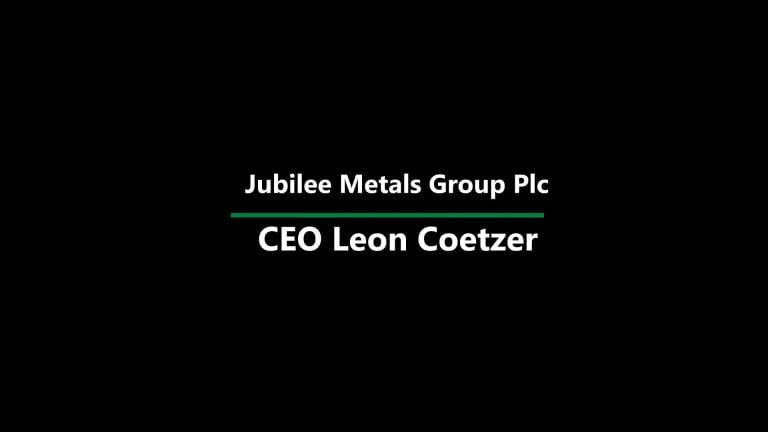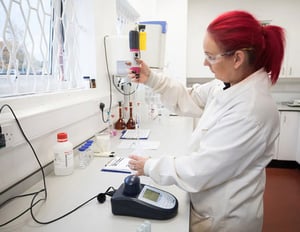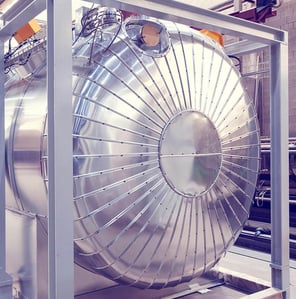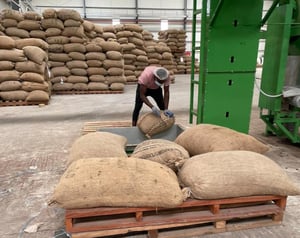Jubilee Metals Group Plc (LON:JLP) has today announced an operations update for its metals recovery division, Jubilee Processing Proprietary Limited (“JPL”) for Q1 2018.
Highlights
· Hernic sets new high for March 2018 producing 1 858 PGM ounces
· Hernic PGM1 production for Q1 2018 up 30 % to 4 897 ounces
· Hernic unit cost per PGM ounce produced USD 434
· Hernic operational earnings increased 18 % to GBP 1.14 million (ZAR 18.91 million)
· Hernic project revenue up 30 % to GBP 2.65 million (ZAR 44.01 million)
· JPL operations revenue up 18 % to GBP 3.90 million (ZAR 64.64 million)
· JPL operations earnings up 4 % to GBP 1.26 million (ZAR 20.95 million)
1 = Platinum Group Metals (6E platinum, palladium, rhodium, iridium, osmium, and gold)
Leon Coetzer, Chief Executive commented: “I am very pleased with the continued operational improvements at our Hernic operations. March 2018 has set a new operational high producing 1 858 ounces while our unit cost to produce a PGM ounce was at a low USD 434.
I expect Q2 2018 to deliver even better operational numbers as the Hernic operation continues to improve.
Our DCM operation is going through a transitional phase as we gear up to execute the PGM project. We have temporarily suspended the processing of 3rd party ore at DCM due to continued variation in feed quality causing operational difficulties negatively impacting our production of chrome from the on-site tailings and surface waste material.
It is an exciting period for Jubilee as we expand our operational reach. Our projects team has a busy time ahead as we look to execute the PlatCro PGM project, DCM PGM project and the Kabwe project.”
HERNIC OVERVIEW
The Hernic operation continues to deliver improved results quarter on quarter. The unit cost per PGM ounce produced of USD 434 sets the standard for the industry and illustrates the robustness of the project. March 2018 delivered 1 858 PGM ounces which is the highest ounces delivered to the refinery in any month to date.
The table below presents the comparative quarterly performance of the Hernic operation:
|
Tailings processed tonnes |
PGM ounces delivered |
Project revenue 1(GBP’000) |
Project revenue2 (ZAR’000) |
Project earnings3(GBP’000) |
Project earnings (ZAR’000) |
Jubilee attributable earnings (GBP’000) |
Jubilee attributable earnings (ZAR’000) |
Unit cost / PGM oz (USD)4 |
|
|
Total Q2 2017 |
80 828 |
808 |
459 |
7.604 |
(110) |
(1.928) |
(110) |
(1.928) |
901 |
|
Total Q3 2017 |
105 673 |
2 874 |
1.539 |
26.581 |
496 |
8.592 |
496 |
8.592 |
476 |
|
Total Q4 2017 |
121 644 |
3 755 |
2.047 |
37.011 |
965 |
17.466 |
965 |
17.466 |
382 |
|
Total Q1 2018 |
110 409 |
4 897 |
2.651 |
44.013 |
1.141 |
18.908 |
1.141 |
18.908 |
434 |
|
Project to date |
418 554 |
12 333 |
6.697 |
115.209 |
2.492 |
43.038 |
2.492 |
43.038 |
458 |
1= Revenue from the current project phase – 100% attributable to Jubilee until full capital recovery. Revenue is projected based on latest average PGM market prices and USD exchange rates and results are only final once final Quotational Period has passed
2= Average monthly conversion rates used
3= Project Earnings include all incurred operational costs including management services and mineral royalties
4= Unit cost includes provision for utility overhead.
DCM overview
The DCM project is gearing up to commence construction of the PGM recovery plant. The plant design target is set at 25 000 tonnes per month of feed material to the chrome and PGM recovery plant. Processing of 3rd party ore at DCM has been suspended temporarily during this time due to significantly varying feed quality resulting in plant operational constraints which also negatively impacts the processing of on-site tailings and surface waste material as reflected in the project numbers.
Phase 1 of the fine chrome recovery circuit has been completed with the design and construction underway of an enlarged fine chrome recovery circuit to enhance the recovery of chrome prior to the recovery of the PGMs.
The table below presents the operational quarterly performance of the DCM operation:
|
Chromite concentrate produced tonnes |
Project revenue (GBP’000) |
Project revenue 1(ZAR’000) |
Project earnings2(GBP’000) |
Project earnings (ZAR’000) |
Jubilee attributable earnings (GBP’000) |
Jubilee attributable earnings (ZAR’000) |
|
|
Total Q4 2017 |
11 788 |
1.254 |
22.858 |
508 |
9.307 |
254 |
4.654 |
|
Total Q1 2018 |
9 810 |
1.240 |
20.628 |
245 |
4.080 |
123 |
2.040 |
|
Project to date |
130 460 |
14.175 |
245.090 |
7.891 |
134.405 |
2.819 |
48.560 |
1= Average monthly conversion rates used
2 = Project earnings include project expenditure on plant and equipment
Tjate Project – issue of shares
Further to the announcement on 2 March 2017 and pursuant to a Deferred Share agreement (“Agreement”) with the historically disadvantaged shareholders (“Beneficiaries”) of black economic empowered New Plats (Tjate) Proprietary Limited, a shareholder in Tjate Platinum Corporation Proprietary Limited (“Tjate”), a total of 4 464 880 new Jubilee Ordinary shares of 1 pence (“Shares”) will be issued to the Beneficiaries.
Tjate has executed a mining right with the Department of Mineral Resources in respect of the Project comprising the Farms Dsjate 249 KT, Fernkloof 539KS and Quartzhill 542 KS, situated in the Magisterial District of Sekhukhune in the Limpopo Province of South Africa. This achieves the third of four hurdles set out in the Agreement, the details of which were previously announced on 6 May 2009.
The Shares will be issued as fully paid and rank pari passu in all respects with the existing ordinary shares, including the right to receive all dividends and other distributions declared on or after the date on which they are issued.
Application will be made for the Shares to be admitted to trading on AIM and to be listed on the AltX of the JSE Limited, which is expected to take place on or about 20 April 2018 (“Admission”).
Following Admission, Jubilee Metals Group total issued share capital will comprise 1 310 992 791 Ordinary Shares. As the Company does not hold any Ordinary Shares in treasury, this figure may be used by shareholders in the Company as the denominator for the calculations by which they will determine if they are required to notify their interest in, or a change to their interest in, the share capital of the Company following Admission.












































